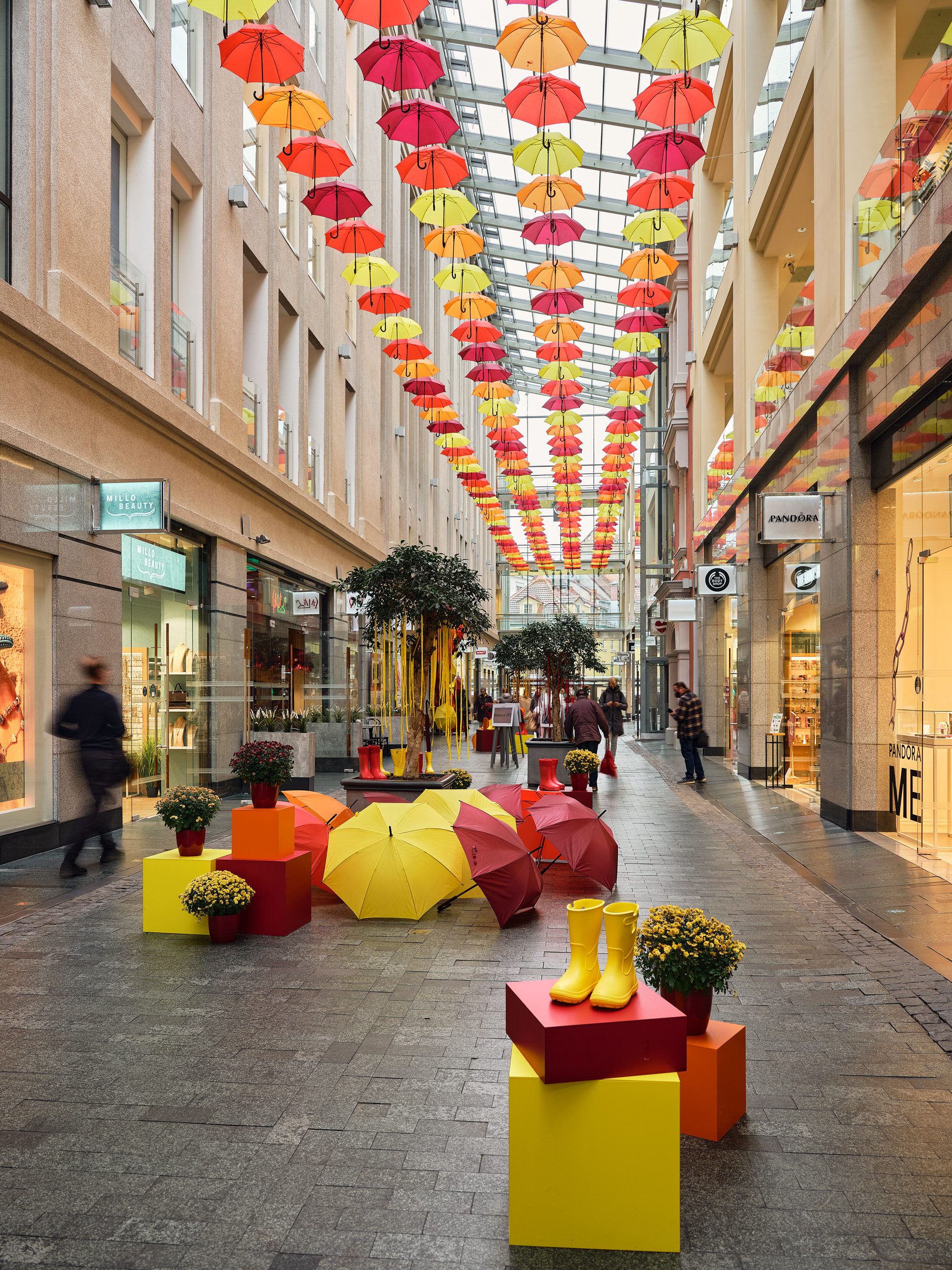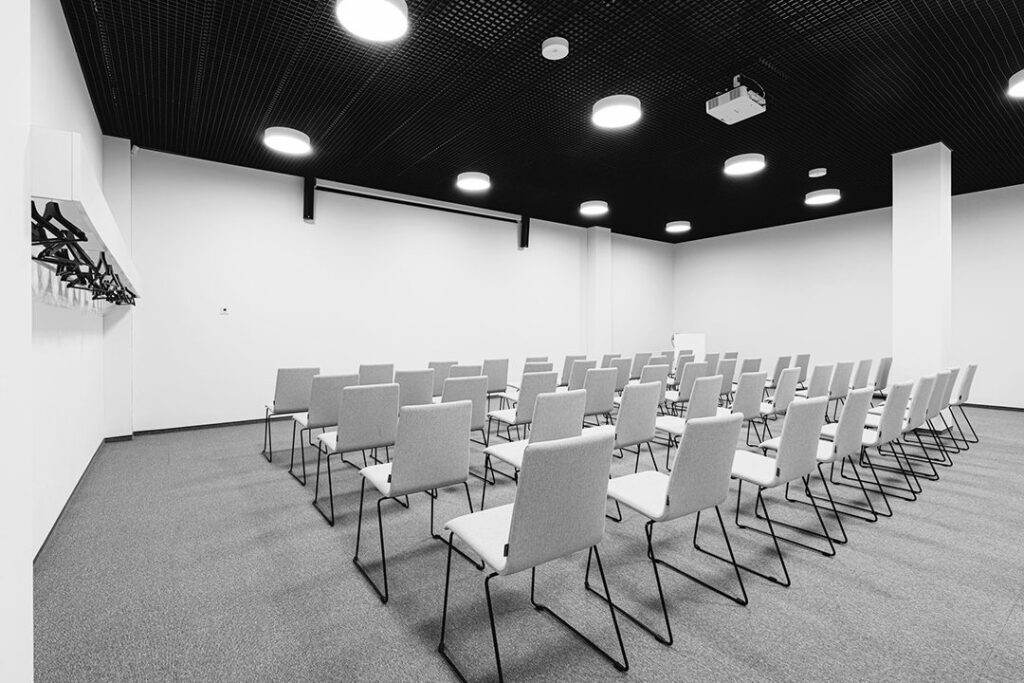
Galerija Centrs is located in Riga’s old town. The shopping centre opened its doors nearly a hundred years ago and most Latvians has their own memory of it. During the 1990s, no one would have guessed that the shadiest part of the old town would soon become a popular place to meet for young and old.
Retail Portfolio Manager Jūratė Gaspariūnienė and Fund Manager Tarmo Karotam from Baltic Horizon, the owner of Galerija Centrs, and the Marketing Manager for the shopping centre Karīna Gebauere share interesting facts from the Galerija Centr’s history and reasons why eg Estonians should visit the shopping center.

Galerija Centrs opened in 1938 as an army department store, and today the shopping center occupies almost a whole block in Riga’s historic Vecrīga district. There are 110 shops on 29,000 square metres. In 16 years, the shopping center will celebrate its 100th birthday, but what is the history of the centre so far?
The centre was already operating during the first Latvian Republic and at that time, one of the city’s most famous restaurants was located on the fifth floor. Only a few restaurants were as famous at the time, one in Vilnius and one in Riga. The area where the restaurant was located is still preserved with all its hidden nooks and the kitchen area. It is a protected heritage building, said Gaspariūnienė.
Could you compare the restaurant to any place in Estonia at that time? For example, Viru Varietee?
Jūratė Gaspariūnienė: It isn’t a restaurant anymore, it is a yoga studio now. But all of the architecture and most of the interior finishing from that time is still there. For example, the mirrors in the ceiling are the same.
Tarmo Karotam: I think that you can compare it to Viru Varietee in Estonia which also offered entertainment in addition to food.

How has Galerija Centrs evolved over time? There used to be different buildings and streets but today it’s one big 29,000-square-metre shopping centre.
Tarmo Karotam: It was originally built as an army department store. And this was before the Soviet era, when Latvia was independent. The army department store was completed in 1938 and even at that time, it was a magnificent building. The connections to the army has been a large part of the building’s history. Even today, there is a small room on the sixth floor used by the Veteran’s Association and the famous restaurant used to host formal army events.
But chronologically, the development of the building complex and the expansion of the shopping centre started during the Soviet period. In 2006, there was a major renovation and a whole new section of the shopping centre was built next to it, which with the internal street make up what we know today as Galerija Centrs.
Before the renovation and the integration, the street used to be one of the worst streets in Riga’s old town. During the 90s, it was home to prostitution and it wasn’t the safest place in the city. Then the city managed to clean up the illegal activities in the area and now the street is part of the shopping centre. It’s a good example of cooperation between Riga’s city planners and the local heritage protection services.

Jūratė Gaspariūnienė: That part of its history isn’t advertised much.
But this concept of integrating an internal street is unique in the Baltics. In Europe, there are many examples of city streets becoming part of shopping centres and roofs being added but in the Baltics, I only know of two. The concept itself is really unique because you feel like you are outside but really you are indoors. And to be honest, it looks great in the natural light.
The cobblestones and the enormous glass facade let in daylight and sun. In the morning, you can see the sunrise from there, and in the evening you can see the sunset. What I especially like about the centre is that this internal street, which is really a public space, has the shape of a river and even its name is connected to a river. The whole heritage, the cobblestone street, the sunset and everything else make the place very romantic.
The public also really likes it. You could say that over time several generations have grown up with different memories of the centre and its street.
In 2006, the building also won an international architecture award, which doesn’t happen often in the Baltic states.
Karīna Gebauere: Actually, it’s an important location for the older generation. Not just for the people who live in Riga but for Latvians in general. At the time that it was an army shopping centre, it was an important place where women could find fashionable clothing and buy all the products that they needed. As for the restaurant, my mother and grandmother have fond memories of the place.

To this day, the centre has an aura of nostalgia about it. The pandemic affected sales and some of the stores had to close – even then the people did not abandon the place. Young people meet and hang out. People of all ages like to grab a coffee at the cafes or just to pass by. For many, the centre has been part of their life growing up, including myself. I used to spend time there with my friends too, which is why even I have many memories of the centre.
Jūratė Gaspariūnienė: Because Galerija Centrs is located in the city centre, it’s one of the most popular places for tourists. For a long time, it used to be one of the few decent shopping centres you could go to in Riga.

Baltic Horizon became the owner of Galerija Centrs in June 2019. Looking at the shopping centres in your portfolio, natural light and sun light seems to be a very important feature. Is this part of your approach?
Tarmo Karotam: Yes, you can sum it up like that, as the Europa shopping centre in Vilnius, for example, has a gallery similarly exposed to sunlight. In Tallinn, we are planning to go the same route with the Postimaja expansion and build a street that connects the cinema with the shopping centre. All of this will take some planning and time.
Jūratė Gaspariūnienė: In the Baltics, this approach is actually rare and unique. Here shopping centres are mostly dark grey boxes, low ceiling buildings that don’t let in sunlight.
We believe that sun light is an important element, and like greenery and wood, we want to incorporate this element in the architecture. We want to emphasise gardens and forests – basically bring all of this indoors. But it is very difficult to incorporate this in a space with a strandard roof. That is why we prefer open and tall atriums.

Another aspect, which I think is especially important going forward, is sustainability. People need to to be exposed to the sun – it is part of how we function. When touching on the new concept that reflects the new trends in shopping centres, this is especially important.
From experience, what you have to do is open up some of the walls. Of course, this is not easy to do in an old existing building, because heritage is important too. The historical element is important but it needs time. The historic element brings back different life cycles just by looking at and feeling the walls. Retail specialists say every property has a soul and a spirit.
When addressing new shopping centre culture, new exciting ways to bring us into nature where plants and fashion coexist are very important to the sustainability concept.

Is if fair to say that Galerija Centrs is the crown jewel of Riga’s shopping centres and the mecca of shopping?
Jūratė Gaspariūnienė: Absolutely. I’d say that it’s actually the crown jewel of Riga’s city centre because Riga’s city centre is unique. Tallinn and Vilnius’ city centres are special in different ways but what makes Riga unique is the size of the old town area. Right in the heart of the city, there’s a huge train station that Vilnius and Tallinn do not have. On top of that, just next to it you have a university and hotels and everything else you need in life. So yes, Galerija Centrs is the crown jewel of Riga’s shopping centres.







